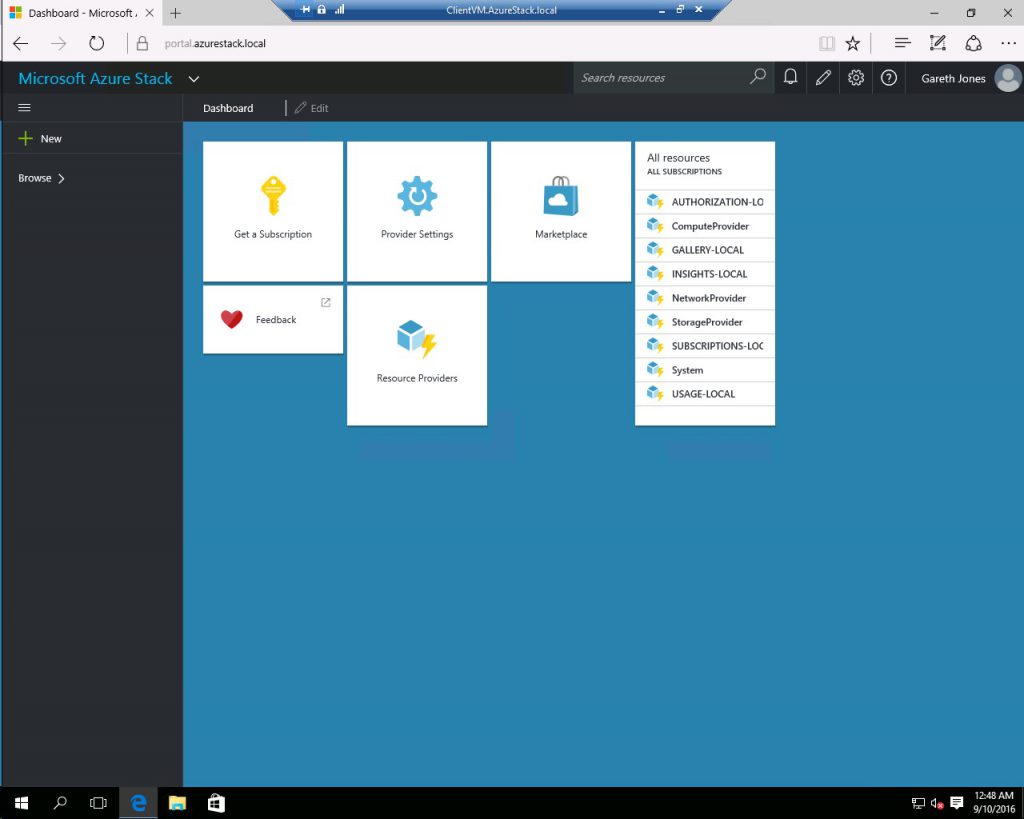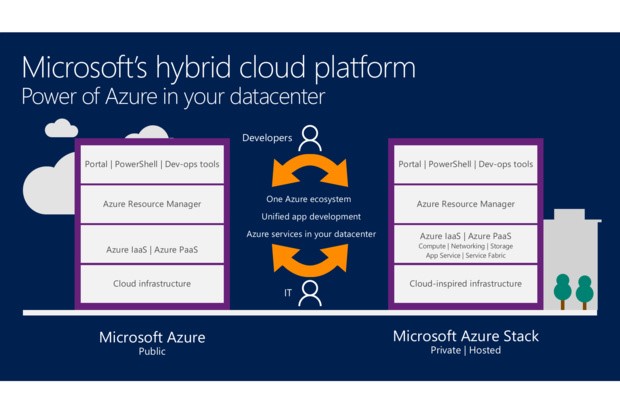Azure Stack – What can it do for my business?

Gareth Jones takes a look at the Azure Stack, including what it is, what it does and how your business can best take advantage of it.
 By Gareth Jones
By Gareth Jones
It’s been over a year since Microsoft accounted and released a public preview of Azure Stack. After scrambling around for some fairly beefy hardware, I excitedly downloaded it to see what this thing is all about. In this article I will go through the benefits of the Azure Stack and how it is a game changer for all types of sectors.

[Figure 1: Azure Stack Portal]
What actually is Azure Stack?
The Azure Stack is effectively Microsoft’s Azure cloud brought into your on-premise datacenter. It’s the way in which Microsoft deploy their Software Defined Datacenter, utilizing the amazing new features of Server 2016. Under the hood it’s running Hyper-V, Software Defined Networking and Software Defined Storage, but the exciting piece is that you don’t need worry about any of that because it’s done for you.
If we back track slightly, for years Microsoft have given us recommendations on how to architect and deploy software and infrastructure and yet seldom has this been followed to the letter. In some cases this is justified however in others it is purely a preference. Imagine now Microsoft give you a script and it deploys the perfect IaaS platform in your datacenter running optimally across 30 physical hosts. Well that is Azure Stack in a nutshell.
You must remember this is not something that is functionally the same as Azure, it is Azure in your datacenter.
Why do I need Azure On-Prem?
A common question is “why do I need Azure in my own on-premise datacenter? Isn’t that the whole idea of cloud?” Well, as we all know, not every customer can or will move to cloud services straight away. They want control and guarantee where their data and infrastructure is. Let’s say the customer wants to eventually move to Azure but at present want complete control and have reservations in regards to security and compliance. Azure Stack to the rescue. The customer can leverage the cool features currently available in Azure but retain complete control of the environment. A great staging process to enable the movement to the public Azure when ready and takes a lot of the hard work out of the migration.

[Figure 2: Azure Stack Comparison]
Essentially Azure Stack enables organisations to run an even richer set of Azure services within their own data centers. It provides a consistent development model, as well as management model and overall ecosystem, across both the public and the private cloud environments, so that you can build applications that leverage the richness of Azure, both from an infrastructure as well as a platform-as-a-service capability, and deploy them wherever it makes the most sense for your business.
Azure Stack for Development and Test Scenarios
Let’s think Azure Resource Manager Templates for a moment. You can create these templates which are interchangeable between Azure Stack and Azure Cloud and deploy exactly the same set of resources regardless of platform. Ideal for labs, customer demos, testing and development. This, coupled with the ability to use these templates over and over again could make deployments to customers hours not weeks or months!
Azure Stack Scalability
Another early adopter scenario that we’re building out with Azure Stack is for an organization that wants and needs the scalability that Azure currently provides, but in a private highly secured environment. Not everyone is moving to the public cloud, or at least right now, for those organisations that have applications they want to scale and manage the same way as they would in Azure, but within the constraints of their own datacenters, Azure Stack will give them that capability.
Azure Stack for Hosting Providers
Given the Azure Pack for System Center is out of mainstream support this year, both Hosting and Managed Service Providers really have a unique opportunity by differentiating their services leveraging the Azure Stack. Enabling customers to leverage the same set of services and infrastructure in a Private Cloud / Hosted environment as Public Azure yet having more control is a great opportunity.
Hands-on with Azure Stack
It’s time to start getting to grips with Azure Stack. We are currently on Technical Preview 2 (TP2) which can be downloaded here. We should see TP3 soon before GA which is scheduled for Mid CY2017 so time is of the essence.
The hardware required to run Azure Stack is fairly significant. See the useful links section for installation details.

Understandably you may not have this level of hardware readily available so there are ways around the hardware requirements for testing. It is possible to run it inside a Nested VM but with the caveat you will not achieve the performance required for a true POC. There are several blogs to assist with this include my own here.
How will it work when it goes GA?
Azure Stack will be delivered via turnkey integrated systems in the initial general availability release, combining software, hardware, support and services in one solution. Microsoft have been working with systems vendors on integrated systems for a while now and see this as the best approach to bring Azure innovation to customer datacenters reliably and predictably. Microsoft are co-engineering these integrated systems with Dell, HPE, and Lenovo to start, however these will be industry-standard servers just configured in a pre-determined and tested manner.
Microsoft Principal Group Program manager Vijay Tewari made the case for shipping the GA release on a small set of hardware stating that it leads to a better product that’s more useful out of the gate. Having a defined set of systems will allow the Azure Stack team to more rapidly deploy updates to Azure Stack consumers.